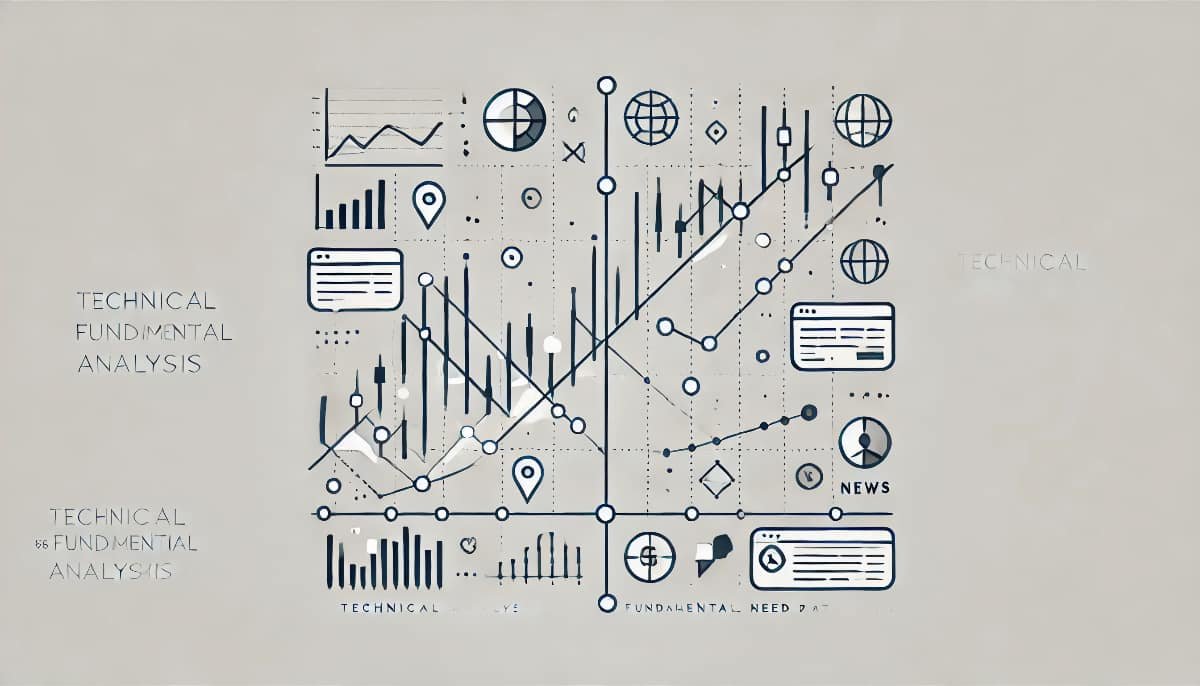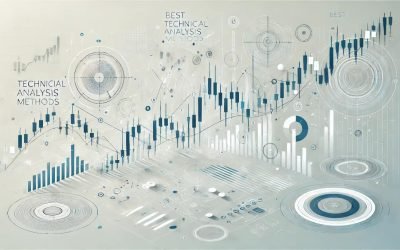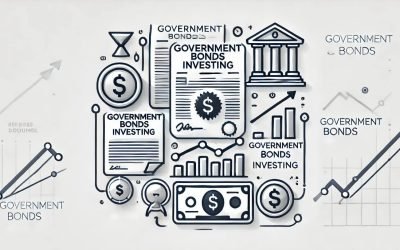Understanding the Core Concepts of Technical and Fundamental Analysis
Investing in the financial markets can be a daunting task, especially for beginners. Two primary methods of analysis dominate the landscape: technical analysis and fundamental analysis. Each approach has its own set of principles, tools, and techniques, and understanding these can significantly enhance your investment strategy. This article delves deep into the intricacies of both technical and fundamental analysis, providing you with a comprehensive guide to make informed decisions.
What is Technical Analysis?
Technical analysis is a method used to evaluate and predict the future price movements of financial assets based on historical price data and trading volume. Unlike fundamental analysis, which focuses on the intrinsic value of an asset, technical analysis is concerned with identifying patterns and trends in price charts.
Key Principles of Technical Analysis
- Price Discounts Everything: The core belief is that all known information is already reflected in the price of the asset.
- Price Moves in Trends: Prices tend to move in identifiable trends, which can be upward, downward, or sideways.
- History Tends to Repeat Itself: Historical price movements are likely to recur due to market psychology.
Common Tools and Techniques
Technical analysts use a variety of tools and techniques to analyse price charts and identify potential trading opportunities. Some of the most commonly used tools include:
- Moving Averages: These are used to smooth out price data and identify trends over a specific period.
- Relative Strength Index (RSI): This momentum oscillator measures the speed and change of price movements.
- Bollinger Bands: These are volatility bands placed above and below a moving average.
- Fibonacci Retracement: This tool helps identify potential support and resistance levels.
What is Fundamental Analysis?
Fundamental analysis involves evaluating a financial asset’s intrinsic value by examining related economic, financial, and other qualitative and quantitative factors. This method is often used to assess the long-term value of stocks, bonds, and other securities.
Key Principles of Fundamental Analysis
- Intrinsic Value: The true value of an asset based on its fundamentals, such as earnings, dividends, and growth potential.
- Economic Indicators: Factors like GDP, unemployment rates, and inflation that can impact an asset’s value.
- Financial Health: Analysis of financial statements, including balance sheets, income statements, and cash flow statements.
Common Tools and Techniques
Fundamental analysts use various tools and techniques to evaluate the intrinsic value of an asset. Some of the most commonly used tools include:
- Price-to-Earnings (P/E) Ratio: This ratio measures a company’s current share price relative to its per-share earnings.
- Dividend Yield: This measures the dividend income relative to the share price.
- Return on Equity (ROE): This measures a company’s profitability relative to shareholders’ equity.
- Debt-to-Equity Ratio: This measures a company’s financial leverage.
Comparing Technical and Fundamental Analysis
While both technical and fundamental analysis aim to help investors make informed decisions, they differ significantly in their approach and focus. Here is a detailed comparison of the two methods:
| Aspect | Technical Analysis | Fundamental Analysis |
|---|---|---|
| Focus | Price movements and patterns | Intrinsic value and financial health |
| Time Horizon | Short-term to medium-term | Long-term |
| Tools | Charts, indicators, and oscillators | Financial statements, ratios, and economic indicators |
| Approach | Quantitative | Qualitative and quantitative |
| Data Used | Historical price and volume data | Financial reports, economic data, and industry trends |
Advantages and Disadvantages
Both technical and fundamental analysis have their own set of advantages and disadvantages. Understanding these can help you choose the right approach for your investment strategy.
Advantages of Technical Analysis
- Quick Decision-Making: Technical analysis allows for rapid decision-making based on real-time data.
- Identifying Trends: It helps in identifying market trends and potential entry and exit points.
- Versatility: Can be applied to various asset classes, including stocks, forex, and commodities.
Disadvantages of Technical Analysis
- Subjectivity: Interpretation of charts and patterns can be subjective.
- Short-Term Focus: Primarily focuses on short-term price movements, which may not be suitable for long-term investors.
- Market Noise: Can be affected by market noise and false signals.
Advantages of Fundamental Analysis
- Long-Term Perspective: Provides a long-term view of an asset’s value.
- Comprehensive Evaluation: Considers a wide range of factors, including financial health and economic conditions.
- Intrinsic Value: Helps in identifying undervalued or overvalued assets.
Disadvantages of Fundamental Analysis
- Time-Consuming: Requires extensive research and analysis.
- Complexity: Involves analysing multiple factors, which can be complex and overwhelming.
- Delayed Reaction: May not be suitable for short-term trading due to its long-term focus.
Integrating Technical and Fundamental Analysis
Many successful investors and traders integrate both technical and fundamental analysis to create a more robust investment strategy. This approach allows them to leverage the strengths of both methods while mitigating their weaknesses.
How to Integrate Both Methods
- Identify Long-Term Trends: Use fundamental analysis to identify long-term trends and potential investment opportunities.
- Timing Entry and Exit Points: Use technical analysis to time your entry and exit points within the identified long-term trends.
- Risk Management: Combine both methods to develop a comprehensive risk management strategy.
Case Studies of Successful Integration
While we won’t delve into specific case studies, it’s worth noting that many renowned investors, such as Warren Buffett and George Soros, have successfully integrated both technical and fundamental analysis in their investment strategies. By doing so, they have been able to achieve consistent returns and manage risks effectively.
Conclusion
In conclusion, both technical and fundamental analysis offer valuable insights for investors and traders. While technical analysis focuses on price movements and patterns, fundamental analysis evaluates the intrinsic value of an asset. Each method has its own set of advantages and disadvantages, and the choice between the two depends on your investment goals, time horizon, and risk tolerance.
Integrating both methods can provide a more comprehensive approach to investing, allowing you to leverage the strengths of each while mitigating their weaknesses. By understanding the core principles, tools, and techniques of both technical and fundamental analysis, you can make more informed decisions and enhance your investment strategy.

Q&A Section
- What is the main difference between technical and fundamental analysis?
The main difference lies in their focus: technical analysis examines price movements and patterns, while fundamental analysis evaluates the intrinsic value of an asset based on financial and economic factors.
- Can technical and fundamental analysis be used together?
Yes, integrating both methods can provide a more comprehensive investment strategy, leveraging the strengths of each approach.
- What are some common tools used in technical analysis?
Common tools include moving averages, relative strength index (RSI), Bollinger Bands, and Fibonacci retracement.
- What are some key principles of fundamental analysis?
Key principles include evaluating intrinsic value, analysing economic indicators, and assessing financial health through financial statements.
- Which method is better for long-term investing?
Fundamental analysis is generally better suited for long-term investing as it focuses on the intrinsic value and long-term potential of an asset.
Recommended articles for further reading:
Here are several insightful articles on the comparison between Technical and Fundamental Analysis, each offering unique perspectives:
- Investopedia’s Overview on Fundamental vs. Technical Analysis: This article provides a comprehensive breakdown of both approaches. It emphasizes how fundamental analysis focuses on a stock’s intrinsic value by examining financial statements, economic indicators, and qualitative factors. On the other hand, technical analysisrelies on historical price data and volume to identify trends and predict future price movements. It also discusses the advantages and criticisms of each method, highlighting that fundamental analysis is often used for long-term investments while technical analysis is favored for short-term trading(Investopedia).
- Charles Schwab’s “Trading Up-Close” Guide: Schwab delves into how traders can benefit from both strategies. The article suggests that even long-term investors might benefit from technical analysis to optimize entry and exit points. It also provides a balanced view of each approach’s strengths, particularly in volatile markets(Charles Schwab).
- Benzinga’s Comparison of Technical and Fundamental Analysis: This piece highlights the practical applications of both methods. Technical analysis is ideal for understanding short-term price fluctuations through tools like moving averages and the Relative Strength Index (RSI). Conversely, fundamental analysis is portrayed as essential for determining a company’s long-term value by assessing its financial health, market position, and macroeconomic factors(Benzinga).
- Finance Strategists’ Comparison of Fundamental and Technical Analysis: This article explains the differences in methodology and application between the two approaches. It suggests that fundamental analysis is valuable for identifying long-term growth opportunities by analyzing financial ratios and company statements, while technical analysis is best suited for short-term trading based on price and volume data(Finance Strategists).
- WallStreetMojo’s Key Differences Between Fundamental and Technical Analysis: This article provides a detailed side-by-side comparison of the two techniques. It highlights how fundamental analysis is used to gauge a stock’s long-term potential by analyzing company financials and industry conditions, whereas technical analysisfocuses on short-term price movements and market trends, making it more relevant for day traders(WallStreetMojo).
These articles cover the nuances of both approaches, offering a balanced view for investors to decide which method suits their goals and risk tolerance.















 How to trade CFD? (00:49)
How to trade CFD? (00:49) How to trade binary options*? (01:22)
How to trade binary options*? (01:22) Forex. How to start? (01:01)
Forex. How to start? (01:01)